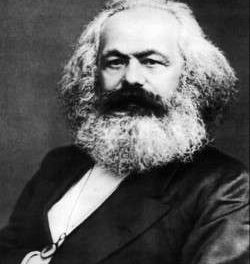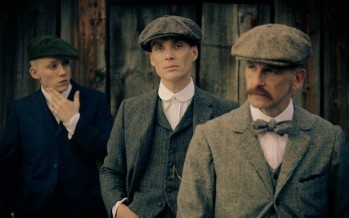I remember watching ‘Mystery Men’ the fourth episode of Mad Men’s extraordinary fifth season and being struck by the moment when Joan at the breakfast table, tells her husband Greg, an army surgeon who is voluntarily returning to Vietnam, to leave. ‘If I walk out that door, that’s it,’ he shouts at her; ‘That’s it,’ she replies, effectively ending their marriage. After he slams the door, her mother (who has been living with her and helping with their baby) comes back into the kitchen holding a coffee pot; ‘It’s over,’ Joan tells her. The pot is put down: she discards it in one motion, and sits in silence with her daughter, as if in that instant it becomes a quaint irrelevance, once an emblem of servitude now just a raw, gross object. That gesture, the holding with two hands – one on the handle the other protected by a cloth under it, taking its weight in two ways before abandoning it, seemed to me – still seems – an incredibly eloquent one. But I am caught by my own failure to translate such eloquence into words, by my inability to become expressive in the face of such expressivity, haunted in fact by the sheer apparent obviousness of what it must be, had I the words to express it. Of course, I want to say, in that gesture in this arrangement of objects there is something to be said about the domestic labour of women in history, as this time, something that demands a feminist response, or some version or variation of that. But by itself discoursing on our recent history, one that seems only an eye-blink from the present, yet sufficiently distant to allow us to be distant too, Mad Men is both a temptation to and a warning against this kind of critical hubris. I doubt that wanting to tie feminist thinking to this moment could sufficiently capture its expressive punctum. Not at least, until there had been the time – for the show and for me – to allow it to settle into the sedimented geology of the cultural imagination. I find with this and other shows I watch (but do not write about regularly) many moments where I can experience the aesthetic kick of the artefact, but, since it goes on (as television, and these women, must) fail to adequately assemble my thoughts in ways that can do it justice.
Indeed I am constantly in awe of those scholars and critics who write about television with the confidence that suggests they can sift and order its complex movement, discourses and resonances with apparent ease (no doubt this is false appearance – I’m sure such apparent ease takes a lot of real labour). Equally I’m currently suspicious of (though frequently complicit in) the kind of approach that exhibits critical, intellectual even imaginative superiority over the objects surveyed, tagged and categorised; let’s say, by contrast, these days I more often feel only submission in the face of works that can clearly out-think and out-feel me. One of the worrying things with writing about very recent television is that one is always aware that one’s proximity to the immediacy of its putative aesthetic thrills threatens the reliability of judgement, perhaps because we are forcing the issue before the material has had an opportunity to insinuate its resonances, discourses and achievements into the critical spaces, traditions and debates necessary for it to establish a reliable presence as part of our cultural heritage. Let me risk more with reference to another show which is currently haunting my viewing as well as reminding me of my attenuated critical abilities.
Although the box sets for both series arrived on the same day, as a perverse experiment with the notion of the ‘first encounter’ (drawn from adaptation studies), I deliberately began watching the US version of Forbrydelson: The Killing (AMC, 2011- ) first. I have not seen enough of the Danish version to make a competent comparison between the two, but they share a central plot which concerns the police investigation of a murdered girl by a grimly determined female cop and her taller, seemingly less experienced male sidekick. In the US version the cop is called Sarah Linden and is played by Mereille Enos and the setting is moved from Copenhagen to Seattle. As in the Danish version there is a complex interweaving of procedural, political and domestic intrigue. Watching the first and now the second season, one notices that the plot goes through many adjustments that are patterned, in often lively and novel ways – moments of enigma, revelation, and narratives of grouping, dissolving and regrouping. But what is continuous, accumulating and frankly inexpressible, is its tonal intensity. I don’t have a form of words for the eloquence I apprehend here, and perhaps because of the method of my consumption I am confusing my saturation in it with submission to its artistry. For example, there are repeated, narratively irrelevant, long shots where a floating camera glides across parts of cityscape which seem to emphasize its isolation, as a place caught between ocean, lake and forest; but such shots also seem to insist that mutely dark urban shapes of the skyscrapers constitute a threat within as well as without. What is the threat, the danger? It seems amorphous and free-floating like the camera, infecting and insinuating the depiction of a damaged and fragmented world, one grasped most fully by Linden herself who like nearly everyone else is the product of a traumatised upbringing. In the title shot her melancholy face is turned away, in a gesture that, only once we know the series, immediately conjures it for us against the landscape she stares into. She is waiting for something that will emerge over time, thanks to a dogged pursuit of the truth that is mirrored by our watching, and waiting, and hoping to find the words to make what we see clear again.
Jason Jacobs is Reader in Cultural History in the School of English, Media Studies and Art History, University of Queensland. He is author of The Intimate Screen and Body Trauma TV. He is currently working on an Australian Research Council funded project called ‘Worldwide: the history of the commercial arm of the BBC’. His BFI TV Classic on on Deadwood will be out in May. He is writing a book on David Milch for the Manchester University Press Television Series and is co-editor with Steven Peacock of the forthcoming collection Global Television: Aesthetics and Style (Continuum).




